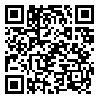Volume 79, Issue 8 (November 2021)
Tehran Univ Med J 2021, 79(8): 575-583 |
Back to browse issues page
Download citation:
BibTeX | RIS | EndNote | Medlars | ProCite | Reference Manager | RefWorks
Send citation to:



BibTeX | RIS | EndNote | Medlars | ProCite | Reference Manager | RefWorks
Send citation to:
Safaei A, Sheibani M, Azizi Y. A journey in anthracycline-induced cardiotoxicity with
emphasizing on doxorubicin: a review article. Tehran Univ Med J 2021; 79 (8) :575-583
URL: http://tumj.tums.ac.ir/article-1-11386-en.html
URL: http://tumj.tums.ac.ir/article-1-11386-en.html
1- Student Research Committee, Iran University of Medical Sciences, Tehran, Iran.
2- Department of Pharmacology, School of Medicine, Iran University of Medical Sciences, Tehran, Iran.
3- Physiology Research Center, Iran University of Medical Sciences, Tehran, Iran. Department of Physiology, School of Medicine, Iran University of Medical Sciences, Tehran, Iran. ,azizi.y@iums.ac.ir
2- Department of Pharmacology, School of Medicine, Iran University of Medical Sciences, Tehran, Iran.
3- Physiology Research Center, Iran University of Medical Sciences, Tehran, Iran. Department of Physiology, School of Medicine, Iran University of Medical Sciences, Tehran, Iran. ,
Abstract: (2605 Views)
Cancer is the second leading cause of death in the United States and has become a health problem worldwide. The reported incidence of new cancer cases is estimated at 19.3 million, with a mortality rate of 10 million in the world in 2020. There are several therapeutic approaches for cancer, including chemotherapy. Chemotherapy is consuming anti-neoplastic drugs, alone or in combination. However, it causes damages to the normal cells and has many side effects. Cardiac complications are common side effects of some chemotherapy agents. Cardiac myocytes are potentially more susceptible to the long-term adverse effects of chemotherapy agents due to the less regeneration ability in cardiac cells. Moreover, heart muscle dysfunction (cardiomyopathy) and cardiovascular complications may occur in cancer survivors even a year after chemotherapy or radiation therapy and influence their quality of life. Anthracyclines are commonly used in chemotherapy; especially doxorubicin is the most widely used drug of this family. Doxorubicin is an effective anti-malignant agent prescribed for the treatment of some solid tumors (e.g. ovary, breast, and gastrointestinal cancers). Doxorubicin can cause several side effects, ranging from cancer treatment’s common side effects such as fever, nausea, and vomiting to lethal cardiac side effects. Assumed that doxorubicin has many therapeutic and cytotoxic mechanisms, cardiotoxicity induced by doxorubicin is very common and there is no reliable treatment for this problem. The cardiac side effects of doxorubicin during a chemotherapy regimen can be acute, chronic, or even gradually progressive and persistent after the termination of doxorubicin therapy. In patients undergoing doxorubicin therapy, reported symptoms are cardiac rhythm and blood pressure changes, pericarditis, myocarditis, cardiomyopathy, and congestive heart failure. The pathophysiology of doxorubicin-induced cardiotoxicity is very wide. Disruption of normal mitochondrial function, decreased amount of antioxidant factors, production of reactive oxygen species (ROS), an imbalance in calcium hemostasis, activation of inflammatory cytokines, targeting topoisomerase-IIβ (Top2b), and induced DNA damage are associated with doxorubicin-induced cardiotoxicity. Increased doxorubicin in mitochondria activates the redox cycle that ultimately leads to the production of reactive oxygen species in both normal and tumor cells. The present review aims to investigate the cardiotoxic mechanisms of doxorubicin and explain different types of doxorubicin-induced cardiotoxicity.
Type of Study: Review Article |
Send email to the article author
| Rights and permissions | |
 |
This work is licensed under a Creative Commons Attribution-NonCommercial 4.0 International License. |





